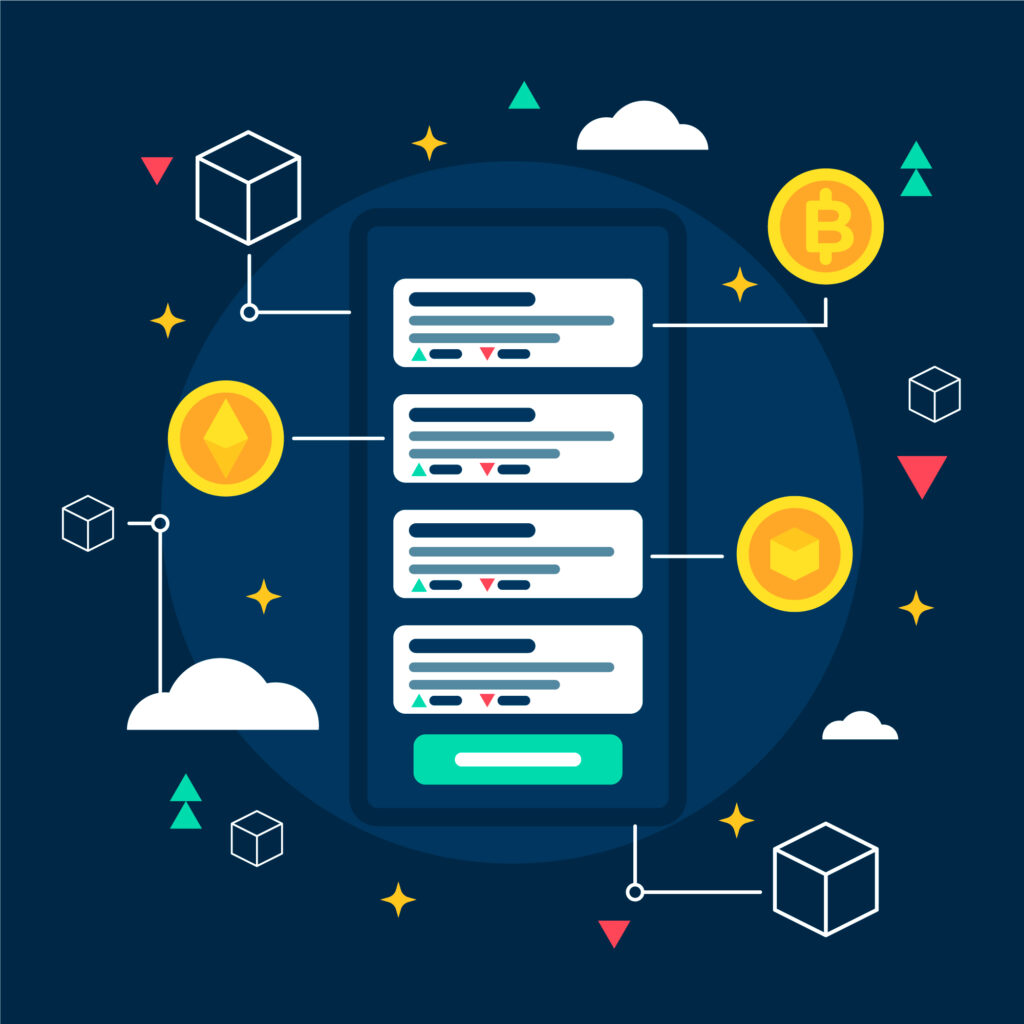
Blockchain technology has become very popular in recent years and has the potential to revolutionize various industries like art, fashion, finance, supply chain, healthcare, entertainment.
Blockchain provides numerous opportunities for innovation due to its decentralized network and secure system for recording transactions and data,
In this comprehensive blockchain app development guide, we will explore its fundamental concepts to provide you with the knowledge you need to get started on your blockchain journey.
What is Blockchain?
Blockchain is like a digital ledger or a record-keeping system which is highly secure, and transparent. It contains a chain of blocks, where each block keeps a list of transactions.
key features of blockchain technology include decentralization, transparency immutability, and consensus mechanisms.
Choose the Right Blockchain Platform
Choosing the right blockchain platform plays an important role when you’re embarking on a blockchain project. There are various blockchain platforms available, each with its own strengths, weaknesses, and use cases. Here we’re adding a few good platforms which can help you choose the right blockchain platform for your specific project:
Ethereum:
- Use Cases: Ethereum is well known for its smart contract capabilities, making it suitable for a wide range of applications, including decentralized finance (DeFi), non-fungible tokens (NFTs), and decentralized applications (DApps).
- Pros: Robust developer community, extensive tooling, and a vast ecosystem of decentralized applications.
- Cons: Scalability issues, high gas fees, and the transition to Ethereum 2.0 is ongoing.
Binance Smart Chain (BSC):
- Use Cases: BSC is designed for projects that require compatibility with Ethereum, lower transaction fees, and faster confirmation times. It’s commonly used for DeFi and NFT projects.
- Pros: Faster and cheaper transactions than Ethereum, easy interoperability with the Binance ecosystem.
- Cons: Centralization concerns due to a smaller number of validator nodes compared to Ethereum.
Cardano:
- Use Cases: Cardano aims for secure, scalable, and sustainable smart contracts. It’s suitable for projects where security is paramount, like financial applications and identity management.
- Pros: Strong academic and research-driven approach, focus on security and sustainability.
- Cons: The ecosystem is still growing, and not as many projects have been deployed yet.
Tezos:
- Use Cases: Tezos offers a self-amending blockchain and is best suited for projects that require on-chain governance and upgradability, like tokenized assets and governance tokens.
- Pros: Self-amending and on-chain governance, formal verification, and scalability improvements.
- Cons: Smaller developer community compared to Ethereum.
Hyperledger Fabric:
- Use Cases: Hyperledger Fabric is designed for enterprise-level, permissioned blockchains. It’s suitable for supply chain management, healthcare, and other industries that require privacy and permissioned access.
- Pros: Permissioned, private blockchain, modular architecture, and robust permissioning system.
- Cons: Complexity and may not be suitable for public, open applications.
Setting Up Your Development Environment
It’s essential to set up your development environment before starting blockchain application development. This includes the installation of specialized blockchain software, development tools, and SDKs.
For Ethereum, you’ll need tools like Truffle and Remix. For Hyperledger Fabric, you’ll work with Composer or Fabric SDKs.
Smart Contract Development
Smart contracts are self-executing contracts with the terms of the agreement directly written into code. They are a fundamental part of numerous blockchain applications. You’ll need to learn a programming language such as Solidity (for Ethereum) or Go (for Hyperledger Fabric) to write smart contracts.
Frontend Development
Your blockchain application will require a frontend to interact with the smart contracts and display information to users. You can use web development technologies like HTML, CSS, and JavaScript to create a user-friendly interface.
Connect Frontend and Smart Contracts
To connect the frontend with your smart contracts, you’ll need to use libraries like Web3.js (for Ethereum) or Fabric SDK (for Hyperledger Fabric). These libraries allow your frontend to communicate with the blockchain.
Testing
Testing is crucial to ensure your blockchain application works for which it is created. You can use testing frameworks like Truffle for Ethereum or tools provided by Hyperledger Fabric for Hyperledger-based projects.
Deployment
Once your application is tested and ready, you’ll deploy it to the blockchain network of your choice. This can involve paying transaction fees and ensuring you meet network-specific deployment requirements.
Security and Auditing
Blockchain applications are prime targets for security breaches. Always make sure to follow best practices for secure coding and contract auditing to protect your application from vulnerabilities.
Maintenance and Updates
Keeping your blockchain applications working properly requires ongoing maintenance, bug fixes, and updates. Stay up-to-date with changes in the blockchain ecosystem and the technologies you use.
Conclusion
Developing blockchain applications is challenging but rewarding endeavor as well. As you go on, you gain a deeper understanding of blockchain technology and how it can give a transformative potential.
Knowledge sharing and collaboration is crucial to stay updated with latest trends and updates in this rapidly evolving technology, and this can be achieved by engaging with the blockchain developer community. With dedication and the right resources, you can create innovative and impactful blockchain applications that contribute to the growth of this exciting technology.


Pingback: Blockchain Security: New Advances and Challenges in 2023 -
It’s always a joy to stumble upon content that genuinely makes an impact and leaves you feeling inspired. Keep up the great work!
Thank you so much! It truly means a lot to hear that my content has an impact. Your support and encouragement keep me motivated! 😊